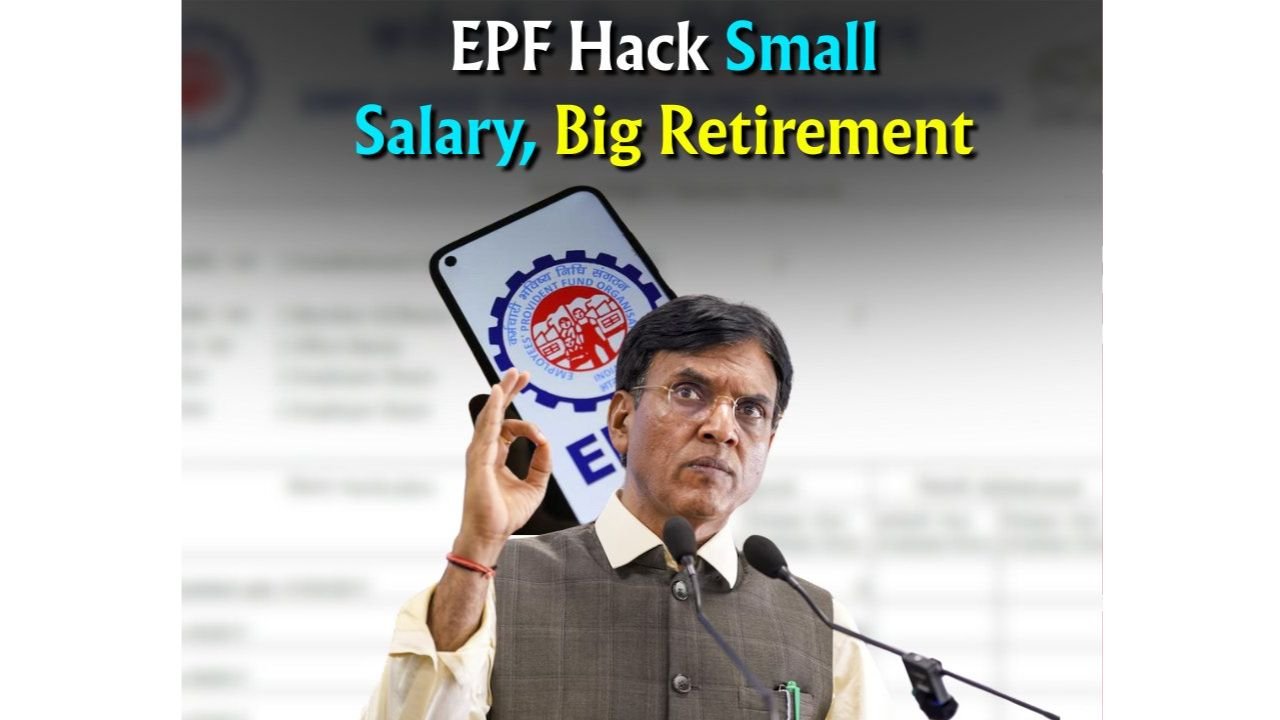EPF Magic: The Employees’ Provident Fund (EPF) is more than just a savings scheme—it’s a powerful tool for long-term wealth creation. For salaried individuals earning ₹25,000 per month, disciplined contributions and the magic of compounding interest under the Employees’ Provident Fund Organisation (EPFO) can potentially build a retirement corpus of nearly ₹70 lakh. This article provides a detailed breakdown of how EPF works, the pension calculation formula, and how small, consistent savings can lead to a financially secure future.
Understanding EPF and How It Works
The Employees’ Provident Fund (EPF) is a government-backed retirement benefits scheme managed by the EPFO. It is mandatory for employees earning up to ₹15,000 per month, but those with higher salaries can also opt in. Under this scheme, employees contribute 12% of their basic salary to the EPF, while employers contribute an additional 12%. However, the employer’s contribution is split—8.33% goes to the Employees’ Pension Scheme (EPS), and the remaining 3.67% goes to the EPF. The current EPF interest rate (FY 2023-24) is 8.25%, compounded annually. Over time, the power of compounding significantly grows the retirement corpus, especially when contributions start early and remain consistent.
EPF Calculation for a ₹25,000 Monthly Salary
Let’s consider the case of a 25-year-old employee with a ₹25,000 basic salary who starts contributing to EPF and continues until retirement at 58 years. Assuming a fixed 8.25% annual interest rate, the EPF corpus grows steadily over 33 years. In the first year, the employee and employer contributions total ₹11,750, with an accrued interest of ₹484, bringing the balance to ₹12,234. By the fifth year, the total contributions reach ₹58,750, with interest pushing the balance to ₹75,161.
The growth accelerates over time—by the 10th year, the corpus crosses ₹1.98 lakh, and by 20 years, it reaches ₹6.83 lakh. After 30 years, the balance stands at ₹17.68 lakh, and upon retirement at 58, the total EPF corpus amounts to ₹26.87 lakh. This projection covers only the EPF portion, excluding additional benefits from EPS and VPF.
Employees’ Pension Scheme (EPS) – How Much Will You Get?
The Employees’ Pension Scheme (EPS) provides a monthly pension after retirement, calculated using a specific formula. The pension amount depends on the pensionable salary (capped at ₹15,000) and the total years of service (maximum 35 years). For an employee with 33 years of service, the monthly pension is calculated as (₹15,000 × 33) ÷ 70 = ₹7,071. This translates to an annual pension of ₹84,852. Over a 30-year retirement period, the total pension payout amounts to ₹25.45 lakh.
When combined with the EPF corpus of ₹44.41 lakh, the total retirement benefit reaches ₹69.87 lakh, providing a substantial financial cushion for the post-retirement years.
Voluntary Provident Fund (VPF) – Boost Your Retirement Savings
For those looking to enhance their retirement savings, the Voluntary Provident Fund (VPF) is an excellent option. Employees can contribute up to 100% of their basic salary voluntarily, earning the same 8.25% interest rate as EPF. These contributions also qualify for tax benefits under Section 80C. Even a modest additional contribution of ₹2,000 per month over 33 years can add ₹18-20 lakh to the retirement corpus, making VPF a smart way to maximize long-term savings.
Tax Benefits on EPF Contributions
EPF enjoys an Exempt-Exempt-Exempt (EEE) tax status, making it highly advantageous for salaried individuals. Contributions up to ₹1.5 lakh per year are deductible under Section 80C, reducing taxable income. The interest earned remains tax-free if the account is held for at least five years. Additionally, the final withdrawal at maturity is completely tax-free, provided the employee has completed five years of service.
Additional Benefits of EPF and EPS
Beyond retirement savings, EPF offers several other benefits. Employees are covered under the Employees’ Deposit Linked Insurance (EDLI) scheme, providing life insurance coverage up to ₹7 lakh. The scheme also allows partial withdrawals for emergencies such as medical expenses, marriage, or education. The Universal Account Number (UAN) ensures seamless transfer of EPF accounts when switching jobs. Employees can also track their contributions digitally through the EPFO portal and UMANG app, ensuring transparency and easy management.
How to Maximize Your EPF Pension
To make the most of EPF, employees should start contributing as early as possible to benefit from compounding. Choosing employers who offer EPF facilities is essential, and employees should avoid withdrawing EPF prematurely when changing jobs. Increasing contributions through VPF can significantly boost the retirement corpus. Regularly updating KYC details and ensuring the UAN is linked and active helps avoid last-minute complications.
Final Thoughts
Even with a modest salary of ₹25,000 per month, disciplined EPF contributions can help build a retirement corpus of nearly ₹70 lakh. By combining EPF savings, EPS pension, and VPF contributions, employees can secure a financially stable future. Since EPF is government-backed, it remains one of the safest and most rewarding long-term investment options for salaried individuals.
Pro Tip: Always ensure your KYC, UAN, and nomination details are updated to avoid any last-minute issues.




